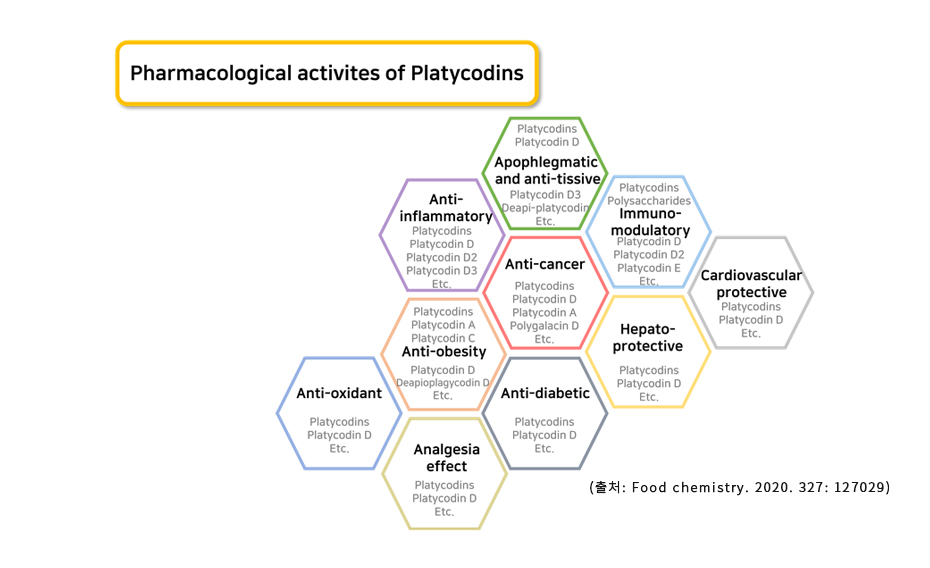
Platycodin
Platycodin
| Bellflower is a crop that has been eaten in East Asian countries for thousands of years, and is an excellent medicinal material that is used in about 300 of the 3,000 prescriptions in Dong-ui-bo-gam. Bellflower is also called Gilkyung in oriental medicine, and it has been used as a special medicine for diseases related to the bronchi and lungs. In Dong-ui-bo-gam, it is recorded that bellflower root is highly effective in respiratory diseases, and because it has expectorant, antitussive, analgesic, sedative, and antipyretic effects, it was used as an anti-inflammatory analgesic and antitussive expectorant. Bellflower roots are rich in more than 18 kinds of amino acids, including essential amino acids, dietary fiber, vitamins, and minerals such as calcium. In addition, saponin is a component that shows the functionality of bellfower. Saponin has analgesic and anti-inflammatory effects, so it has the effect of releasing phlegm by controlling the production of mucin, which acts as a lubricant in the bronchial mucosa.  Bellflower saponin is a pentacyclic oleanane triterpenoid, and is classified as platycodin saponin according to the form of glycoside.. Depending on the type of glycoside, 76 types of platycodin saponins have been discovered so far. Among them, platycodin D is the most well-known ingredients. It has been reported to have various effects such as antitussive expectoration, central nervous system suppression (soothing, analgesic, antipyretic), lowering blood sugar, improving cholesterol metabolism, anti-inflammatory, anti-obesity, and anti-atopy. In addition, as experimental results were announced at the ibs Institute for Basic Science that platycodin D can prevent infection by blocking the process of corona virus fusing with human cells, it was found that platycodin D has a therapeutic effect on COVID-19, an acute respiratory disease.  |
